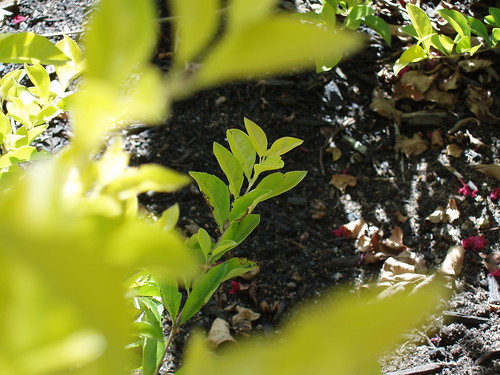Many articles have been written about the negative effects of carbon dioxide. Sick Building Syndrome, loss of concentration due to high levels of carbon dioxide, asphyxiation in breweries or wine cellars, all these things spring to mind when we hear the magic phrase carbon dioxide. Yet, perhaps today when Venus passes across the face of the Sun, we should remember that our original atmosphere consisted of nitrogen and carbon dioxide. Free oxygen is something that is not really chemically possible. Yet we have it as a result of plant life busily photosynthesising and converting carbon dioxide into oxygen during daylight hours. This is the original use of solar energy!

Plants require carbon dioxide to grow and why not help them by increasing the level of carbon dioxide? Normally, this is something that is undesirable, since carbon dioxide is the original greenhouse gas, as our neighbouring planet Venus can testify. But in a controlled, genuine greenhouse environment, there is no real reason why the level of carbon dioxide should not be enhanced in some way.
Indeed, tests have shown that increasing the level of carbon dioxide in a greenhouse to 550 ppm will accelerate plant growth by 30 - 40 %. The natural level of carbon dioxide in the atmosphere is around 450 ppm, having increased from about 250 ppm in the last ice-age, so this slight increase may not appear significant at first sight. The point of the matter is that the level of carbon dioxide in the average greenhouse with the ventilation system closed will drop sharply due to uptake by the plants and will lie around 150 - 200 ppm if nothing is done about it. In summer the ventilation system will be open and the fresh air circulation will augment the level to a useful degree. But what about those long, cold, dark northern winters? Most commercial greenhouses will have lighting and heating systems to encourage plant growth, but you still cannot open the ventilation and allow the cold outside air into your heated greenhouse without losing all the early crops. The only real solution is to augment the natural level of carbon dioxide in some way. Where it is used, the general rule of thumb is to augment by about 1000 ppm when the sun is shining (or all the lights are on!) and keep the level around 400 ppm during times of darkness. This will require monitoring, since there are so many variable factors involved and a simple control unit using an infrared sensor will be able to keep the concentration of gas constant at all times.
Rate of consumption varies with crop, light intensity, temperature, stage of crop development and nutrient level. An average consumption level is estimated to be between 0.12 - 0.24 kg/hr/100 m2 of greenhouse floor area. The higher rate reflects the typical usage for sunny days and a fully-grown crop. This equates to roughly 150 litres of carbon dioxide per hour.
There are many processes that naturally and unavoidably produce carbon dioxide:
Fermentation and combustion are two classic examples. In temperate zones it is necessary to heat a greenhouse (glasshouse is just another word for the same thing), and this heating will almost always involve the burning of fossil fuels, producing carbon dioxide. This leads to the natural urge to re-circulate the exhaust gas from the heating system into the greenhouse and so achieve a double advantage for the plants. This will require careful monitoring of the flue gas to ensure that there are at the most only traces of carbon monoxide being passed into the greenhouse. This is not only bad for the plants but also potentially lethal to the people working there! Such technology is available with gas monitors that will measure the carbon monoxide concentration continuously and have analogue outputs that can be used to regulate the burners or operate a trip to switch the unit off should problems occur.
The combination of breweries with greenhouse systems is also serious business in some areas. Generally, these methods are to be approved and should really be worthy of government support. Not only are they producing crops, they are removing a pollutant that would otherwise be vented into the atmosphere.
Monitoring of the added carbon dioxide is essential, however, since high concnetrations of carbon dioxide can lead to dizziness or even unconciousness of the personnel. Some plants will require higher levels of nutrients to compensate for some of the changes that occur. Particularly tomatoes and violets are sensitive to increased levels of carbon dioxide, hence the need for constant monitoring of the ambient concentration.












